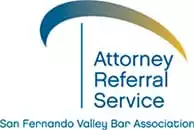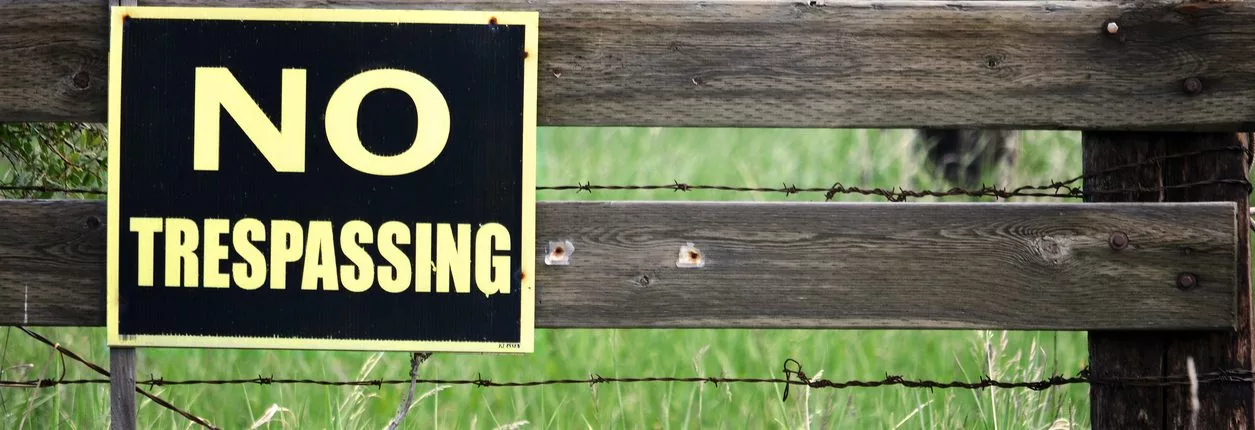How to Charge Someone with Trespassing
If you’re experiencing a trespassing issue on your property, you may be able to use the law to prevent the trespassing visitor from visiting your property.
In this article, we’re taking a closer look at how to charge someone with trespassing.
Introduction
In California, private property is defined as any property not owned by a government entity. This includes homes, offices, most businesses, and even large tracts of privately-owned land. When someone enters these areas without permission or in spite of the owner denying them access, they are in violation of California trespassing laws.
Whether trespassing is intentional and malicious or the person committing it simply refuses to leave, taking action is important. We’ll help you better understand your options and explain how to charge someone with trespassing in this guide.
Here’s how to charge someone with trespassing.
What is Trespassing?
Under Penal Code 602 PC, trespassing occurs whenever someone intentionally remains on, or enters, another person’s private property without permission. But this alone isn’t necessarily enough to qualify someone as guilty; there are other factors that need to be in place in order to make the incident a chargeable offense.
- The trespass must be purposeful and under free will. In order to qualify as trespassing, the person who trespasses against you must be acting with intent and by their own free will. Someone who accidentally enters your land while exploring the countryside, for example, isn’t usually trespassing – unless, of course, they refuse to leave when asked. The same is true for someone who is forced into or onto your property against their will (say, during an assault).
- The individual must be forewarned or otherwise notified (or there must be a reasonable expectation that private property exists). This can have a variety of meanings depending on the scenario at hand. In many cases, notification is implied when reasonable evidence of private property exists (such as when a residential property is locked or when you have a fence).
In other cases (such as on large tracts of open land), it isn’t considered reasonable to expect people to know whether all property is private. Putting up “no trespassing” signs, informing the person directly, and asking them to leave immediately are all considered sufficient.
- The individual had the intent to interfere with or obstruct activity on the property. In the case of private residences, this is essentially any action that interferes with the reasonable ability to enjoy your property as you normally would. In a private business, it can also mean interfering with daily business operations and/or interrupting patrons as they do business.
- The individual had the intent to cause harm or damage. There must be evidence that the individual intended to harm you, damage your property, or otherwise interfere. This includes any kind of physical harm to the property, animals living on it, the landscape, or the people within it.
It is important to note that intent to interfere alone is enough – the person(s) do not necessarily need to follow through with whatever action they had planned in order to be considered guilty. For example, someone who is removed by police before they can assault you is just as guilty of trespassing as the individual who actually follows through.
What is the Penalty for Trespassing?
Penalties for trespassing vary widely depending on how the crime is prosecuted (an infraction, a misdemeanor, or a felony). This is typically decided by the prosecutor or police based on the severity of the incident in question.
Minor incidents, for example, are generally prosecuted as an infraction. Punishments are minor (e.g., a fine of up to $100).
Misdemeanor trespassing is more serious and generally involves a higher level of interference without threats or harm. People found guilty of this crime may be required to pay a fine of up to $1000 and/or spend up to six months in jail.
Felony aggravated trespassing is considered the most serious form; it always involves some kind of threat or direct harm. Perpetrators who are found guilty can potentially serve up to three years in jail.
What to Do If Someone is Trespassing On Your Property
Start by calling the police. If it isn’t safe to remain in the trespasser’s presence long enough to make the call, or if you are afraid for your life, secure your own safety first before you make the call. You might leave, lock yourself in your vehicle, go to a neighbor’s house, or even just get behind a locked door. Then, immediately call 911.
While you do have the option to confront the individual directly and ask them to leave, it should be noted that this action isn’t without risk – especially if the person in question has malicious intent. However, it may be the better option in cases where the individual is clearly amicable and/or where it isn’t clear whether they really were trespassing (e.g., a farmer finds someone walking through a field).
How to Charge Someone With Trespassing
You can initiate trespassing charges by filing a report with the police when they arrive to answer your call. An officer will ask you a series of questions about the incident, the identity of the offender, and the evidence associated with the trespass. He or she will review the evidence and decide whether there is enough evidence to support filing an official charge.
Note that if you don’t file charges right away for any reason (perhaps you opted out initially and later changed your mind) you still have the option to do so later. Visit your local Sheriff’s office and/or police station to start this process. An officer will take down a report, review the evidence, and file charges on your behalf.
Where to Find a Trespassing Lawyer
The best way to find a trespassing lawyer is to contact a legal referral service by telephone.
Someone will take down basic information about your case and then help you identify the best possible lawyers to suit your needs and your budget. Because all lawyer referral services are regulated and licensed by the California Bar, you can trust them to provide only the best recommendations at all times.
Conclusion
Now that you know how to charge someone with trespassing, you can rest confidently knowing you can handle the situation.
If you are experiencing trespassing right now, remember that step number one should always be to ensure your own safety and the safety of your property first. Call the police! Then, reach out to an attorney who specializes in trespassing cases to ensure your rights are respected during every step of the legal process.
If you need help with a trespassing issue and want to speak with an attorney, contact the SFVBA Attorney Referral Service to set up a free consultation.
Are you in search for a certified attorney to represent you?
Let us help you find one today!


